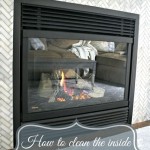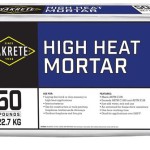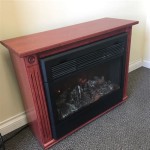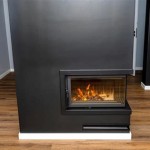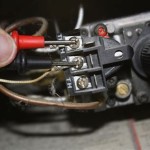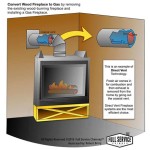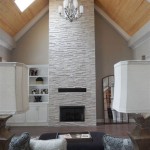Replacement Parts for Gas Fireplaces: A Comprehensive Guide
Gas fireplaces offer a convenient and efficient way to enjoy the ambiance and warmth of a traditional fireplace without the mess and maintenance associated with wood-burning models. However, like all appliances, gas fireplaces require periodic maintenance and may need replacement parts over time to ensure optimal performance, safety, and longevity. Understanding the common replacement parts, their functions, and the factors that contribute to their wear and tear is crucial for homeowners and service technicians alike.
This article provides a comprehensive overview of the various replacement parts typically found in gas fireplaces, exploring their roles within the system and offering insights into troubleshooting common issues. Recognizing the symptoms of a failing component can help prevent more significant problems and ensure the safe and efficient operation of the gas fireplace.
Understanding the Key Components and Their Functions
A gas fireplace comprises several interconnected components, each vital for its proper operation. Identifying these parts and understanding their individual roles is the first step in addressing any performance issues or maintenance needs.
Gas Valve: The gas valve is the heart of the gas fireplace system. It controls the flow of gas to the burner assembly. This valve is typically an automatic valve, often electrically controlled, that regulates the gas supply based on the thermostat or control settings. A malfunctioning gas valve can prevent the fireplace from igniting, cause erratic flame behavior, or result in a gas leak, making it a critical safety component. The valve is commonly constructed from brass or aluminum and houses internal solenoids and regulators that manage the gas flow.
Thermocouple/Thermopile: The thermocouple or thermopile is a crucial safety device. It generates a small electrical current when heated by the pilot light flame. This current is used to keep the gas valve open. If the pilot light goes out, the thermocouple cools down, interrupting the current and automatically shutting off the gas supply to prevent a dangerous gas buildup. A faulty thermocouple or thermopile is a common cause of pilot light issues and requires prompt replacement. Thermocouples are generally made of two dissimilar metals joined together, producing voltage based on the temperature difference between the hot and cold junctions.
Pilot Assembly: The pilot assembly consists of the pilot burner, the pilot orifice, and the igniter. The pilot burner provides a small, continuous flame that ignites the main burner when needed. The pilot orifice controls the flow of gas to the pilot burner and is a small, precision-engineered part. The igniter, typically a spark igniter or a hot surface igniter, initiates the pilot flame. A clogged pilot orifice, a faulty igniter, or a damaged pilot burner can prevent the pilot light from staying lit, interrupting the fireplace's operation. Pilot assemblies might also include a flame sensor to confirm the pilot flame's presence.
Burner: The burner is where the gas mixes with air and combusts, producing the flames and heat. Burners are typically made of stainless steel or cast iron and come in various shapes and sizes depending on the fireplace model. Corrosion, cracking, or clogging of the burner can affect the flame pattern, reduce heat output, or create dangerous carbon monoxide. The design of the burner significantly impacts the flame appearance and efficiency of the gas fireplace.
Log Set: While primarily decorative, the log set plays a role in distributing heat and affecting the flame pattern. Log sets are typically made of ceramic fiber or refractory cement and are designed to resemble natural wood. Damaged or improperly positioned logs can obstruct the burner, causing incomplete combustion or affecting the overall aesthetic. The placement of the logs is crucial to allow adequate airflow and prevent carbon monoxide buildup.
Control Module/Circuit Board: Modern gas fireplaces often incorporate an electronic control module or circuit board that manages various functions, including ignition, flame sensing, and temperature control. This module receives signals from the thermostat, flame sensor, and other components and controls the gas valve and other actuators accordingly. A malfunctioning control module can cause a wide range of problems, from ignition failures to erratic flame behavior. These modules often contain microprocessors and require specialized knowledge for troubleshooting and repair.
Blower Motor: Many gas fireplaces include a blower motor to circulate warm air into the room, increasing the fireplace's heating efficiency. The blower motor typically consists of a fan and a motor housed in a metal enclosure. A failing blower motor can produce unusual noises, reduce airflow, or stop working altogether. Over time, the bearings in the motor can wear out, requiring replacement of the entire blower assembly. Blower motors are often speed-controlled to adjust the airflow based on user preference.
Glass Panel: The glass panel serves as a protective barrier, preventing accidental contact with the flames and retaining heat within the firebox. The glass must be made of tempered or ceramic glass to withstand the high temperatures. Cracked or broken glass must be replaced immediately to ensure safety and maintain the fireplace's efficiency. The glass panel also contributes to the overall aesthetic of the fireplace.
Common Issues and Troubleshooting Steps
Many gas fireplace problems can be traced back to specific component failures. Understanding the common issues and their potential causes can help homeowners and technicians diagnose and resolve problems more effectively.
Pilot Light Won't Stay Lit: This is a common issue often caused by a faulty thermocouple or thermopile. If the thermocouple is not generating sufficient voltage, it will not keep the gas valve open. Another possible cause is a clogged pilot orifice, which restricts the gas flow to the pilot burner. Cleaning the orifice or replacing the thermocouple is often the solution. In some cases, a weak gas pressure can also cause the pilot light to extinguish.
Fireplace Won't Ignite: If the pilot light is lit but the main burner won't ignite, the problem may lie with the igniter, the gas valve, or the control module. A faulty igniter may not produce a spark, preventing the main burner from igniting. A malfunctioning gas valve may fail to open, preventing gas from flowing to the burner. A defective control module may not send the signal to open the gas valve. Testing the ignition system and the gas valve is necessary to pinpoint the exact cause. Checking the wiring and connections to the control module is also essential.
Weak or Yellow Flame: A weak or yellow flame indicates incomplete combustion, which can produce carbon monoxide. This issue is often caused by a clogged burner, insufficient air supply, or incorrect gas pressure. Cleaning the burner, adjusting the air shutter, or checking the gas pressure regulator may resolve the problem. The log placement can also affect the flame quality, so ensure they are positioned correctly. A dirty or clogged air intake can also restrict airflow, resulting in a yellow flame.
Unusual Noises: Unusual noises, such as clicking, hissing, or popping, can indicate various problems. Clicking sounds may be caused by a faulty igniter attempting to spark. Hissing sounds may indicate a gas leak, which requires immediate attention. Popping sounds may be caused by thermal expansion or contraction of the firebox components. Identifying the source and nature of the noise is crucial for determining the appropriate course of action. Loose connections or components can also contribute to unusual noises.
Blower Not Working: If the blower is not working, check the power supply, the blower motor, and the control switch. A tripped circuit breaker or a faulty switch may be the cause. If the motor is humming but the fan is not turning, the motor may be seized and require replacement. The blower motor may also have thermal overload protection, which can trip if the motor overheats. Ensuring proper ventilation around the blower motor can prevent overheating.
Selecting the Right Replacement Parts
Choosing the correct replacement parts is essential for ensuring proper fit, function, and safety. Using generic or incompatible parts can lead to performance issues, safety hazards, or even damage to the fireplace. The following points should be considered when selecting replacement parts:
Manufacturer's Recommendations: Always refer to the fireplace's owner's manual for recommended replacement parts. Using parts specifically designed for the fireplace model ensures compatibility and optimal performance. Many manufacturers offer online resources or customer support to help identify the correct parts.
Part Number Verification: Verify the part number on the original component before ordering a replacement. This ensures that the new part is an exact match. The part number is typically stamped or labeled on the component itself. Cross-referencing the part number with the manufacturer's catalog can confirm compatibility.
Quality and Certification: Choose replacement parts from reputable suppliers and manufacturers. Look for parts that are certified by recognized testing organizations, such as UL or CSA. Certified parts have undergone rigorous testing to ensure safety and performance. Avoid using cheap or uncertified parts, as they may not meet safety standards.
Gas Type Compatibility: Ensure that the replacement parts are compatible with the type of gas used by the fireplace, whether natural gas or propane. Using parts designed for the wrong gas type can be dangerous and may damage the fireplace. The gas type compatibility is typically indicated on the part itself or in the product description.
Professional Installation: Consider having a qualified gas fireplace technician install replacement parts, especially for gas-related components. A professional technician has the expertise and tools to ensure proper installation and safety. Improper installation can lead to gas leaks, carbon monoxide poisoning, or other hazards.
In conclusion, maintaining a gas fireplace requires a basic understanding of its components, potential issues, and appropriate replacement parts. Proper diagnosis and selection of compatible, high-quality replacement parts are essential for ensuring the safe, efficient, and reliable operation of the appliance. Following manufacturer’s recommendations and seeking professional assistance when needed will contribute to a long-lasting and enjoyable fireplace experience.

A Plus Inc Superior B800 Replacement Parts And Accessories

Gas Fireplace Natural Bdm35 The Cozy Cabin Lennox Hearth Parts

A Plus Inc Superior Vf 4000 Replacement Parts Accessoreis

A Plus Inc Lennox Ebcr Replacement Parts And Accessories

A Plus Inc Lennox Edv3530 Replacement Parts Accessories

A Plus Inc Lennox Ebvpf Replacement Parts And Accessories

G400 Series G450 G490 Natural Vent Gas Fireplace 114 117 The Cozy Cabin Stove Parts

A Plus Inc Superior Vf 5000 Replacement Parts Accessoreis

A Plus Inc Lennox Superior Marco Majestic Peterson

Monessen Ildv30 Direct Vent Gas Fireplace Insert Ildv Series Ereplacementparts Com
Related Posts

